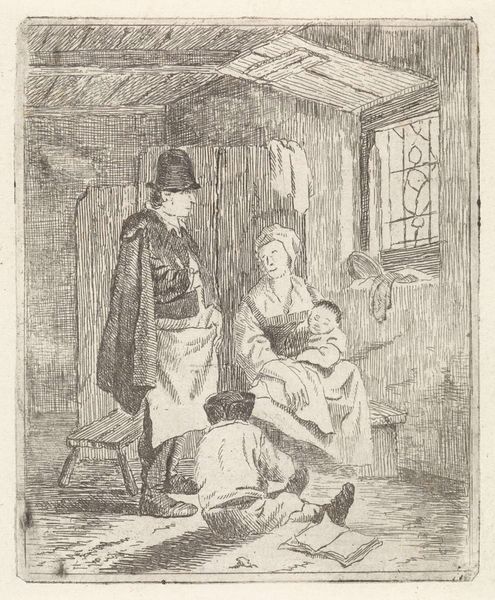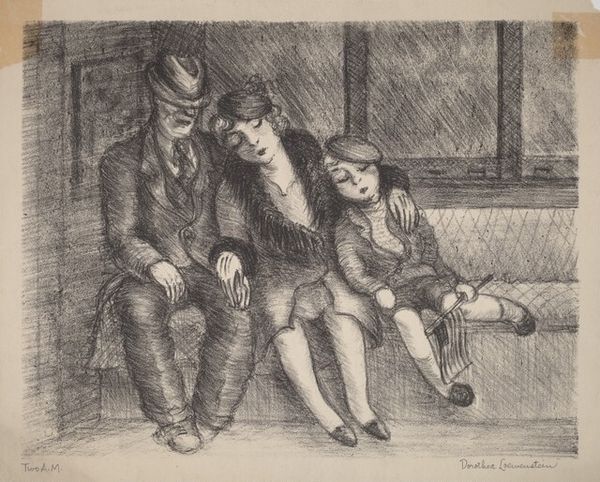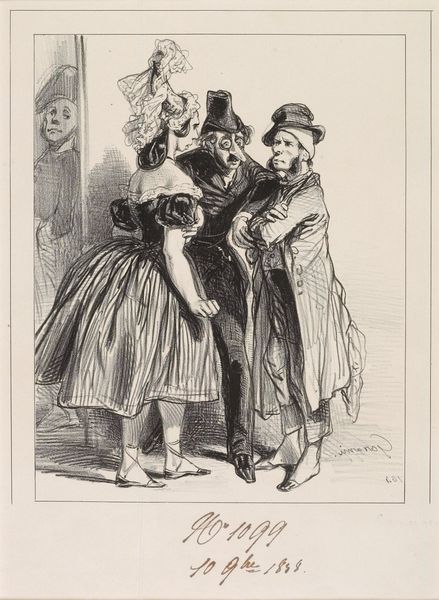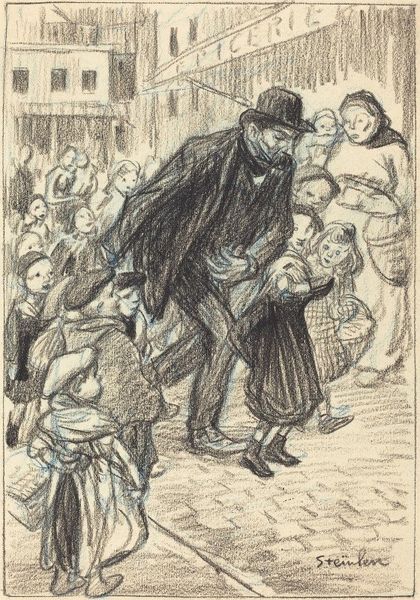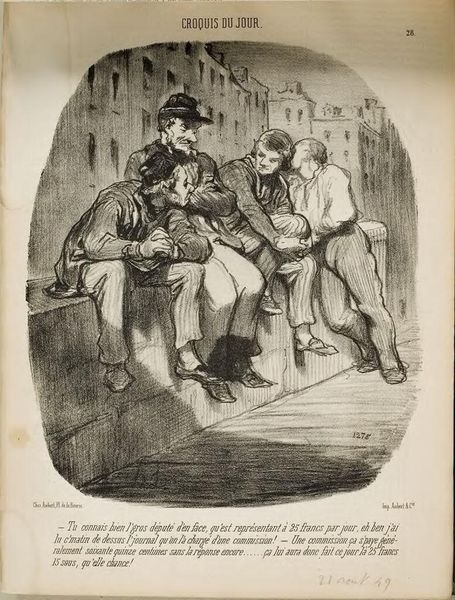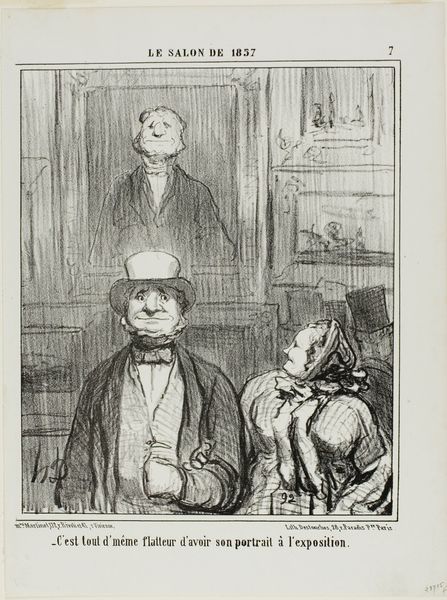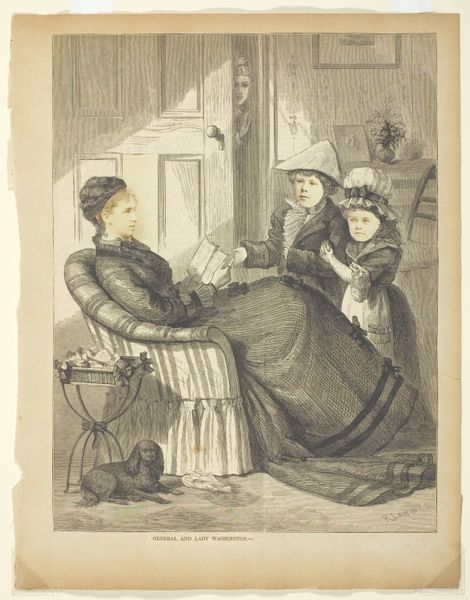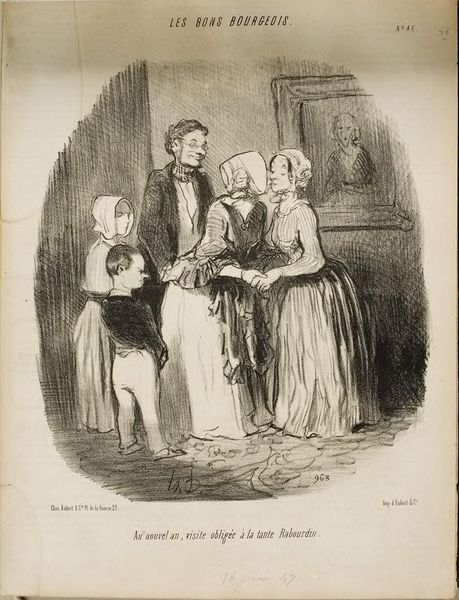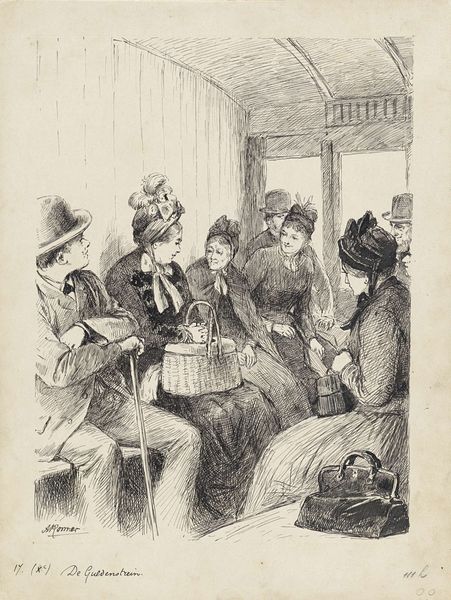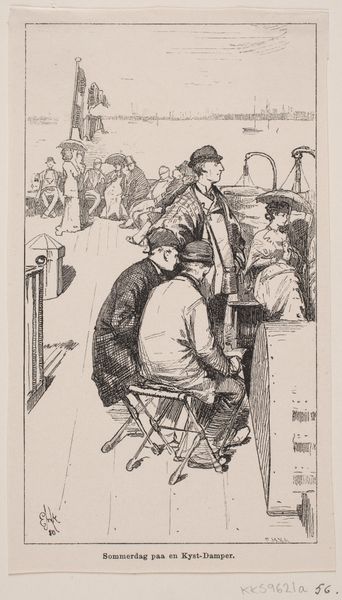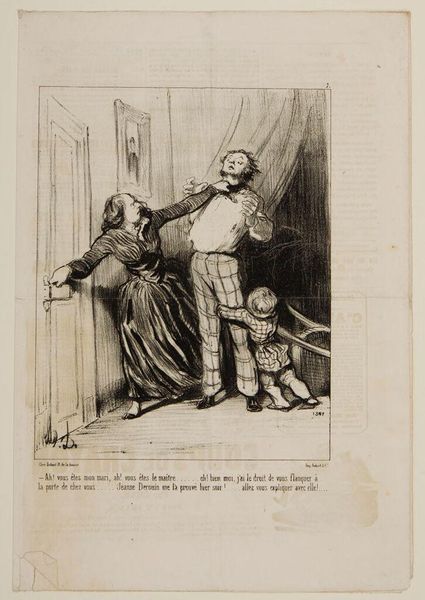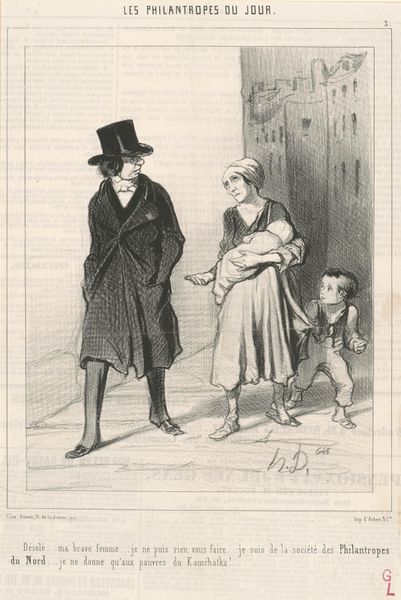
Dimensions: image: 175 x 121 mm
Copyright: CC-BY-NC-ND 4.0 DEED, Photo: Tate
Editor: Frederick Walker’s “Philip in Church,” engraved by Swain, presents a poignant scene. The subdued mood, rendered in detailed lines, invites reflection. What symbolic weight do you see within this image? Curator: Notice how the figures are arranged, a family unit enclosed in a pew, almost like a stage. The act of reading becomes a symbol of learned tradition, yet the averted gazes hint at inner thoughts, perhaps dissent or boredom. Does the church setting amplify or diminish these individual experiences? Editor: That's interesting, I hadn't considered the averted gazes. It's like they're physically present but mentally elsewhere. Curator: Exactly. It speaks to the complex relationship between public ritual and private emotion, a tension echoed throughout history and still resonant today.
Comments
tate 6 months ago
⋮
http://www.tate.org.uk/art/artworks/walker-philip-in-church-engraved-by-swain-n04059
Join the conversation
Join millions of artists and users on Artera today and experience the ultimate creative platform.
tate 6 months ago
⋮
This is one of a number of designs Pinwell produced for Thackerays’s last novel, The Adventures of Philip serialised in The Cornhill Magazine from January 1861 until August 1862. Thackeray wrote to Walker in 1861 ‘The Blocks you have executed … have given so much satisfaction that I hope we may look for more from the same hand’. Philip, shown sitting on the far left of a church pew, appears distracted while the rest of the congregation say their prayers. The figure was modelled by Gilbert Dalziel, who presented some of the wood-engravings shown in this room to the Tate Gallery in 1924. Gallery label, July 2008

